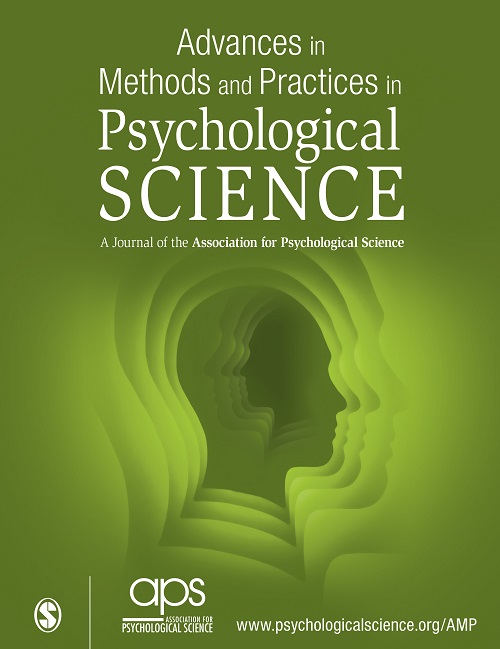Simulation-Based Power Analyses for the Smallest Effect Size of Interest: A Confidence-Interval Approach for Minimum-Effect and Equivalence Testing
IF 15.6
1区 心理学
Q1 PSYCHOLOGY
Advances in Methods and Practices in Psychological Science
Pub Date : 2024-04-01
DOI:10.1177/25152459241240722
引用次数: 0
Abstract
Effect sizes are often used in psychology because they are crucial when determining the required sample size of a study and when interpreting the implications of a result. Recently, researchers have been encouraged to contextualize their effect sizes and determine what the smallest effect size is that yields theoretical or practical implications, also known as the “smallest effect size of interest” (SESOI). Having a SESOI will allow researchers to have more specific hypotheses, such as whether their findings are truly meaningful (i.e., minimum-effect testing) or whether no meaningful effect exists (i.e., equivalence testing). These types of hypotheses should be reflected in power analyses to accurately determine the required sample size. Through a confidence-interval-focused approach and simulations, I show how to conduct power analyses for minimum-effect and equivalence testing. Moreover, I show that conducting a power analysis for the SESOI might result in inconclusive results. This confidence-interval-focused simulation-based power analysis can be easily adopted to different types of research areas and designs. Last, I provide recommendations on how to conduct such simulation-based power analyses.基于模拟的最小相关效应大小的功率分析:最小效应和等效性检验的置信区间法
在心理学中,效应大小经常被使用,因为在确定研究的所需样本大小和解释结果的意义时,效应大小至关重要。最近,研究人员被鼓励将他们的效应大小与背景联系起来,并确定能产生理论或实际影响的最小效应大小,这也被称为 "感兴趣的最小效应大小"(SESOI)。有了 SESOI,研究人员就可以提出更具体的假设,比如他们的研究结果是否真正有意义(即最小效应检验),或者是否不存在有意义的效应(即等效检验)。这些类型的假设应反映在功率分析中,以准确确定所需的样本量。通过以置信区间为重点的方法和模拟,我展示了如何进行最小效应和等效检验的功率分析。此外,我还展示了对 SESOI 进行功率分析可能会导致不确定的结果。这种以置信区间为重点、基于模拟的功率分析可轻松应用于不同类型的研究领域和设计。最后,我就如何进行这种基于仿真的功率分析提出了建议。
本文章由计算机程序翻译,如有差异,请以英文原文为准。
求助全文
约1分钟内获得全文
求助全文
来源期刊
CiteScore
21.20
自引率
0.70%
发文量
16
期刊介绍:
In 2021, Advances in Methods and Practices in Psychological Science will undergo a transition to become an open access journal. This journal focuses on publishing innovative developments in research methods, practices, and conduct within the field of psychological science. It embraces a wide range of areas and topics and encourages the integration of methodological and analytical questions.
The aim of AMPPS is to bring the latest methodological advances to researchers from various disciplines, even those who are not methodological experts. Therefore, the journal seeks submissions that are accessible to readers with different research interests and that represent the diverse research trends within the field of psychological science.
The types of content that AMPPS welcomes include articles that communicate advancements in methods, practices, and metascience, as well as empirical scientific best practices. Additionally, tutorials, commentaries, and simulation studies on new techniques and research tools are encouraged. The journal also aims to publish papers that bring advances from specialized subfields to a broader audience. Lastly, AMPPS accepts Registered Replication Reports, which focus on replicating important findings from previously published studies.
Overall, the transition of Advances in Methods and Practices in Psychological Science to an open access journal aims to increase accessibility and promote the dissemination of new developments in research methods and practices within the field of psychological science.

 求助内容:
求助内容: 应助结果提醒方式:
应助结果提醒方式:


